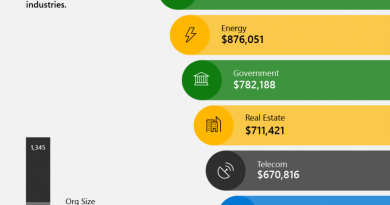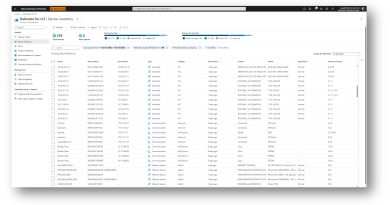4 ways Microsoft is delivering security for all in a Zero Trust world

If there’s one thing the dawning of 2021 has shown, it’s that security isn’t getting any easier. Recent high-profile breach activity has underscored the growing sophistication of today’s threat actors and the complexity of managing business risk in an increasingly connected world. It’s a struggle for organizations of every size and for the public and private sector alike. As we move into this next phase of digital transformation, with technology increasingly woven into our most basic human activities, the questions that we as security defenders must ask ourselves are these: How do we help people to have confidence in the security of their devices, their data, and their actions online? How do we protect people, so they have peace of mind and are empowered to innovate and grow their future? How do we foster trust in a Zero Trust world?
As defenders ourselves, we are passionate proponents of a Zero Trust mindset, encompassing all types of threats—both outside in and inside out. We believe the right approach is to address security, compliance, identity, and device management as an interdependent whole and to extend protection to all data, devices, identities, platforms, and clouds—whether those things are from Microsoft or not.
You may have heard us talk about our commitment to security for all, and that’s at the heart of it. We are deeply inspired to empower people everywhere to do the important work of defending their communities and their organizations in an ever-evolving threat landscape.
With that approach in mind, today I’m excited to share several additional innovations across four key areas with you—identity, security, compliance, and skilling—to give you the holistic security protection you need to meet today’s most challenging security demands.
1. Identity: The starting point of a Zero Trust approach
Adopting a Zero Trust strategy is a journey. Every single step you take will make you more secure. In today’s world, with disappearing corporate network perimeters, identity is your first line of defense. While your Zero Trust journey will be unique, if you are wondering where to start, our recommendation is to start with a strong cloud identity foundation. The most fundamental steps like strong authentication, protecting user credentials, and protecting devices are the most essential.
Today we are announcing new ways that Azure Active Directory (Azure AD), the cloud identity solution of choice for more than 425 million users, can help you on your Zero Trust journey:
- Passwordless authentication, which eliminates one of the weakest links in security today, is now generally available for cloud and hybrid environments. Now you can create end-to-end experiences for all employees, so they no longer need passwords to sign in to the network. Instead, Azure AD now lets them sign in with biometrics or a tap using Windows Hello for Business, the Microsoft Authenticator app, or a compatible FIDO2 security key from Microsoft Intelligent Security Association partners such as Yubico, Feitian, and AuthenTrend. With Temporary Access Pass, now in preview, you can generate a time-limited code to set up or recover a passwordless credential.
- Azure AD Conditional Access, the policy engine at the heart of our Zero Trust solution, now uses authentication context to enforce even more granular policies based on user actions within the app they are using or sensitivity of data they are trying to access. This helps you appropriately protect important information without unduly restricting access to less sensitive content.
- Azure AD verifiable credentials is entering preview in just a few weeks. Verifiable credentials let organizations confirm information—like their education or the professional certifications someone provides—without collecting and storing their personal data, thereby improving security and privacy. In addition, new partnerships integrating Azure AD verifiable credentials with leading identity verification providers like Onfido, Socure, and others will improve verifiability and secure information exchange. Customers such as Keio University, the government of Flanders, and the National Health Service in the UK are already piloting verifiable credentials.
Learn more about our Azure AD announcements in today’s blog post by Joy Chik.
2. Security: Simplifying the “assume breach” toolset
In today’s landscape, your security approach should start with the key Zero Trust principle of assume breach. But too often, complexity and fragmentation stand in the way. It is our commitment to helping you solve this, as we build security for all, delivered from the cloud.
This begins with integrated solutions that let you focus on what matters and deliver visibility across all your platforms and all your clouds. Some vendors deliver endpoint or email protection, while others deliver Security Information and Event Management (SIEM) tools, and integrating those pieces together can be a time-consuming challenge. Microsoft takes a holistic approach that combines best-of-breed SIEM and extended detection and response (XDR) tools built from the ground up in the cloud to improve your posture, protection, and response. This gives you the best-of-breed combined with the best-of-integration so you don’t have to compromise.
Today we are making the following announcements to simplify the experience for defenders with modern and integrated capabilities:
- Microsoft Defender for Endpoint and Defender for Office 365 customers can now investigate and remediate threats from the Microsoft 365 Defender portal. It provides unified alerts, user and investigation pages for deep, automated analysis and simple visualization, and a new Learning Hub where customers can leverage instructional resources with best practices and how-tos.
- Incidents, schema, and user experiences are now common between Microsoft 365 Defender and Azure Sentinel. We also continue to expand connectors for Azure Sentinel and work to simplify data ingestion and automation.
- The new Threat Analytics provides a set of reports from expert Microsoft security researchers that help you understand, prevent, and mitigate active threats, like the Solorigate attacks, directly within Microsoft 365 Defender.
- We are bringing Secured-core to Windows Server and edge devices to help minimize risk from firmware vulnerabilities and advanced malware in IoT and hybrid cloud environments.
Learn more about our threat protection announcements in today’s blog post by Rob Lefferts and Eric Doerr. Learn more about our Secured-core announcements in today’s blog post by David Weston. You can also learn more about new security features in Microsoft Teams in today’s blog post by Jared Spataro.
Today’s announcements continue, and strengthen, our commitment to deliver best-of-breed protection, detection, and response for all clouds and all platforms with solutions like Defender for Endpoint—a leader in the Gartner Magic Quadrant, available for Android, iOS, macOS, Linux, and Windows; and Azure Sentinel—which looks across your multi-cloud environments, including AWS, Google Cloud Platform, Salesforce service cloud, VMware, and Cisco Umbrella.
3. Compliance: Protection from the inside out
At Microsoft, we think of Zero Trust as not only the practice of protecting against outside-in threats, but also protecting from the inside out. For us, addressing the area of compliance includes managing risks related to data.
And that isn’t just the data stored in the Microsoft cloud, but across the breadth of clouds and platforms you use. We’ve invested in creating that inside-out protection by extending our capabilities to third parties to help you reduce risk across your entire digital estate.
Today we are announcing these new innovations in compliance:
- Co-authoring of documents protected with Microsoft Information Protection. This enables multiple users to work simultaneously on protected documents while taking advantage of the intelligent, unified, and extensible protection for documents and emails across Microsoft 365 apps.
- Microsoft 365 Insider Risk Management Analytics, which can identify potential insider risk activity within an organization and help inform policy configurations. With one click, customers can have the system run a daily scan of their tenant audit logs, including historical activity, and leverage Microsoft 365’s Insider Risk Management machine learning engine to identify potential risky activity with privacy built-in by design.
- Microsoft 365 now offers data loss prevention (DLP) for Chrome browsers and on-premises server-based environments such as file shares and SharePoint Server.
- Azure Purview is integrated with Microsoft Information Protection, enabling you to apply the same sensitivity labels defined in Microsoft 365 Compliance Center to data residing in other clouds or on-premises. With Azure Purview, a unified data governance solution for on-premises, multi-cloud, and software as a service (SaaS) data, you can scan and classify data residing in AWS Simple Storage Services (S3), SAP ECC, SAP S4/HANA, and Oracle Database.
Learn more about our compliance announcements in today’s blog post by Alym Rayani.
4. Skilling: Power your future through security skilling
We know that many of you continue to struggle to fill the security skills gap with an estimated shortfall of 3.5 million security professionals by 2021. That’s why we strive to ensure you have the skilling and learning resources you need to keep up in our world of complex cybersecurity attacks. We are excited to announce two different ways Microsoft is supporting skilling cybersecurity professionals.
First, Microsoft has four new security, compliance, and identity certifications tailored to your roles and needs, regardless of where you are in your skilling journey. To learn more about these new certifications, please visit our resource page for Microsoft Certifications.
- Security, Compliance, and Identity Fundamentals certification will help individuals get familiar with the fundamentals of security, compliance, and identity across cloud-based and related Microsoft services.
- Information Protection Administrator Associate certification focuses on planning and implementing controls that meet organizational compliance needs.
- Security Operations Analyst Associate certification helps security operational professionals design threat protection and response systems.
- Identity and Access Administrator Associate certification help individuals design, implement and operate an organization’s identity and access management systems by using Azure Active Directory.
We also recognize that the world we live in is complex but growing your skills shouldn’t be. The Microsoft Security Technical Content Library will help you find content relevant to your needs. Use it to access content based on your own needs today.
You can also learn more on today’s Tech Community blog post.
Security for all
We at Microsoft Security are committed to helping build a safer world for all. Every day, we are inspired by the work of our defenders and we are focused on delivering innovations, expertise, and resources that tip the scale in favor of defenders everywhere because the work you do matters. Security is a team sport, and we’re all in this together.
To learn more about Microsoft Security solutions, visit our website. Bookmark the Security blog to keep up with our expert coverage on security matters. Also, follow us at @MSFTSecurity for the latest news and updates on cybersecurity.
READ MORE HERE



